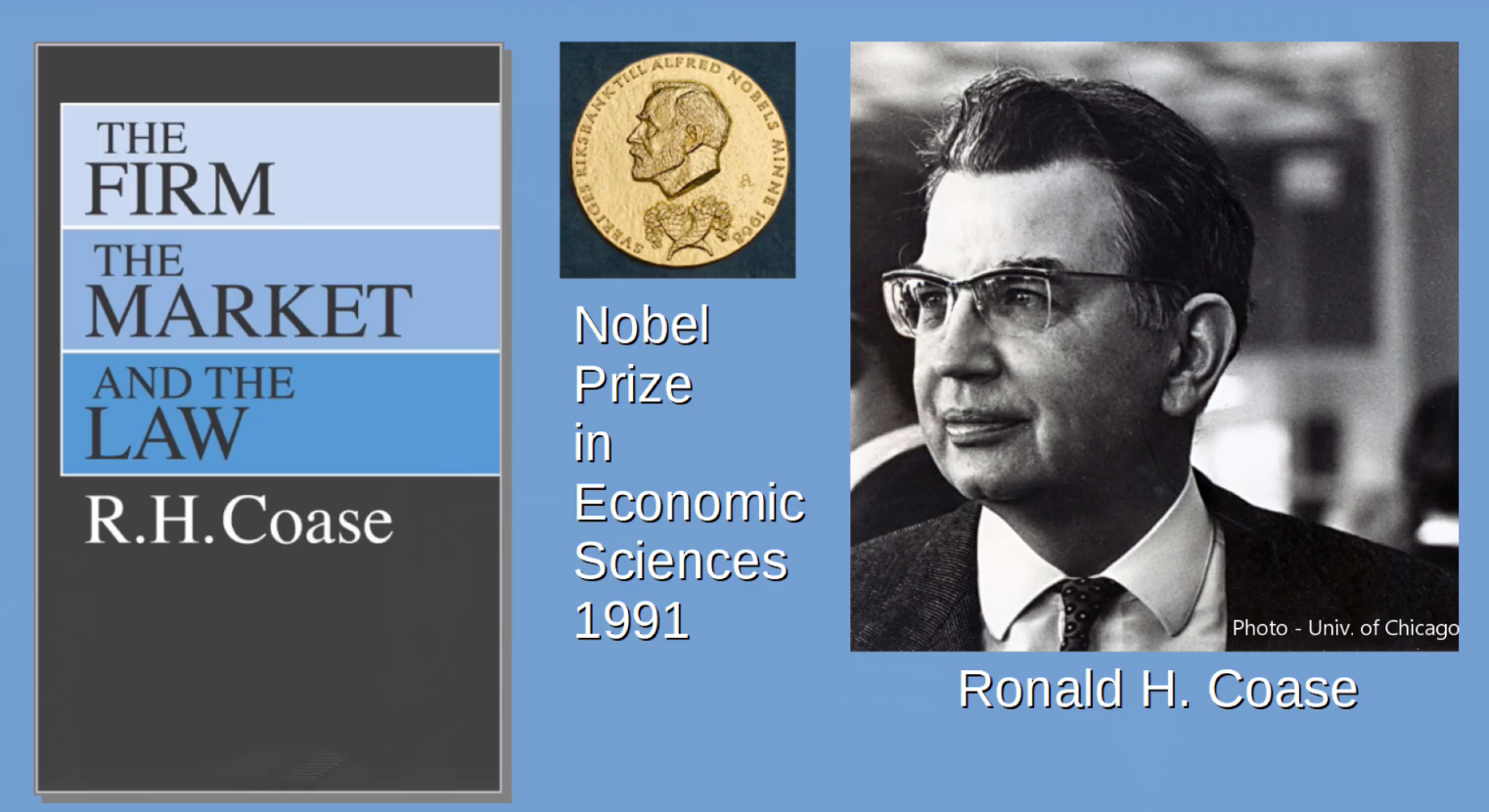https://www.facebook.com/CPCMP/videos/vb.181913810273/10160362413965274/?type=3&theater
Understanding the economy as a dynamic, complex system relies on the foundational work of several economists, including Adam Smith (of course) and Ronald Coase. As Coase observed in his 1991 Nobel Prize address,
What I have done is to show the importance for the working of the economic system of what may be termed the institutional structure of production. …The concentration on the determination of prices has led to a narrowing of focus which has had as a result the neglect of other aspects of the economic system. Sometimes, indeed, it seems as though economists conceive of their subject as being concerned only with the pricing system and that anything outside this is considered as no part of their business. … This neglect of other aspects of the system has been made easier by another feature of modern economic theory – the growing abstraction of the analysis, which does not seem to call for a detailed knowledge of the actual economic system or, at any rate, has managed to proceed without it. … The firm in mainstream economic theory has often been described as a “black box”. And so it is.
In the 27 years since Coase’s Nobel address, institutional and transaction cost economics has blossomed, and the program of the upcoming Society for Institutional and Organizational Economics annual conference reflects the growth in the kind of empirical work on economic and legal institutions that Coase advocated. Such work opens the black box of firms and situates their decision-making in the context of the legal and social institutional frameworks that shape their incentives.
Coase always viewed Adam Smith’s work as one of his inspirations (he also wrote a couple of excellent essays analyzing aspects of Smith’s work, which I assign in my history of economic thought course). From his Nobel address, and repeating an excerpt I quoted above:
Economists have uncovered the conditions necessary if Adam Smith’s results are to be achieved and where, in the real world, such conditions do not appear to be found, they have proposed changes which are designed to bring them about. It is what one finds in the textbooks. Harold Demsetz has said rightly that what this theory analyses is a system of extreme decentralization. It has been a great intellectual achievement and it throws light on many aspects of the economic system. But it has not been by any means all gain. The concentration on the determination of prices has led to a narrowing of focus which has had as a result the neglect of other aspects of the economic system.
Coase’s emphasis on empirical evidence — qualitative and quantiative — and on understanding the arrangements that people make when they engage in exchange reflect Smith’s influence on his thinking. What are the institutions that enable such a system of extreme decentralization? How do those institutions affect the transaction costs that can reduce or prevent mutually-beneficial exchange that coordinates activity through prices? Those are questions that have to be understood in order to understand the determination and role of prices, as well as structure and composition of firms. These were Coase’s questions, and they were Smith’s questions too.

I had a valuable opportunity to reflect on Smith’s influence on Coase in March, when I was one of the guest speakers at Adam Smith Week, an annual event of the Center for Public Choice and Market Process at the College of Charleston. The event started with a panel of guest speakers — Randy Holcombe, Bruce Caldwell, Bart Wilson, Bobbi Herzberg, and myself — connecting several Nobel laureate economists and their work to the influence of Adam Smith’s ideas: James Buchanan, F.A. Hayek, Vernon Smith, Elinor Ostrom, and Ronald Coase. The video above encapsulates my remarks on the Coase-Smith connections, which are deep and rich and remain relevant to economics in the 21st century.